Summary of the Day:
In a climate of heightened international tensions, CIA Director William Burns offered a measured perspective on Russia’s nuclear rhetoric, urging caution against overreaction and framing it as a strategic ploy to sway Western support for Ukraine. This diplomatic assessment coincided with revelations from Russian military bloggers, shedding light on the Kremlin’s nuanced approach to information control—a strategy favoring subtle co-option and self-censorship over overt censorship.
On the battlefield, the ebb and flow of the conflict continued. Russian forces launched counteroffensives in Kursk Oblast, while Ukrainian troops persisted with their own offensive operations in the region. The strategic landscape shifted further as Russian soldiers made gains near Toretsk and Chasiv Yar.
Meanwhile, internal strife bubbled to the surface within Russia itself. The Russian Investigative Committee launched an inquiry into what was described as a “mass brawl” between ultranationalists and Central Asian residents in Krasnodar Krai. This incident underscored the growing tensions simmering beneath Russia’s societal surface, adding another layer of complexity to the nation’s current state of affairs.
What Can I Do To Help Ukraine? This is a question I receive all the time. We at Transform Ukraine are building longer-term housing for internally displaced Ukrainians. Visit Rebuild Ukraine for how you can assist in housing a Ukrainian family displaced by the war.
Picture of the Day:
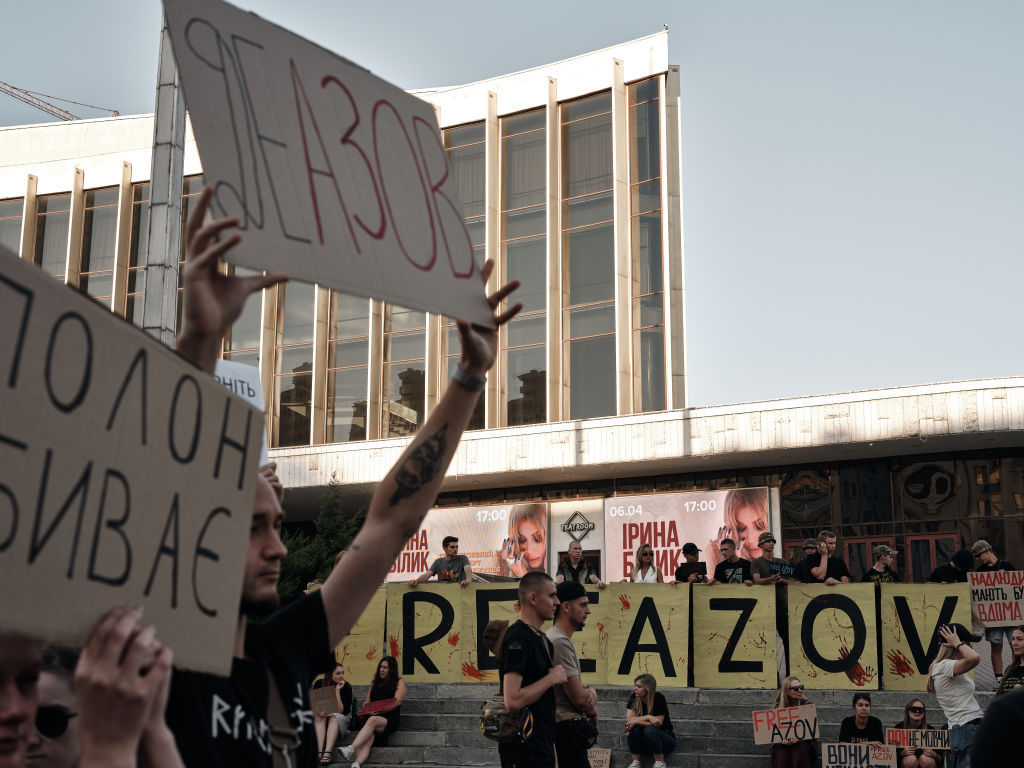 Relatives of prisoners of war came out in Kyiv for the traditional weekly rally “Don’t be silent! Prison kills.”, in Kyiv. (Kostiantyn Liberov/Libkos/Getty Images)
Relatives of prisoners of war came out in Kyiv for the traditional weekly rally “Don’t be silent! Prison kills.”, in Kyiv. (Kostiantyn Liberov/Libkos/Getty Images)
Beyond Ukraine – The March Towards World War
CIA Director William Burns offered a sobering assessment of Russia’s nuclear rhetoric, urging a measured response to what he characterized as tactical posturing rather than genuine intent. Burns revealed that while Russia had considered using tactical nuclear weapons in Ukraine during the fall of 2022, particularly amid Ukrainian counteroffensives in Kharkiv and Kherson oblasts, the current threats are more likely aimed at deterring Western aid. The CIA’s analysis suggests that Russia is unlikely to deploy nuclear weapons in Ukraine or elsewhere, despite possessing the world’s largest nuclear arsenal of 5,580 warheads, according to the Federation of American Scientists.
In response to this nuclear saber-rattling, Burns engaged in high-level diplomacy, meeting with his Russian counterpart to communicate potential consequences of such actions. He emphasized the importance of not being intimidated by these threats, even as Russian officials, including President Putin, continue to assert their readiness to use nuclear weapons if deemed necessary.
Meanwhile, tensions escalated along NATO’s eastern border. A Russian drone crashed in eastern Latvia on September 7, with Latvian President Edgars Rinkevics announcing the incident and noting an increase in such occurrences. Latvian military officials surmised that the drone likely entered their airspace unintentionally.
In a separate incident on September 8, a Russian drone briefly violated Romanian airspace during an attack on Ukraine. Romanian authorities promptly alerted residents in Tulcea and Constanta counties to seek shelter and dispatched F-16 jets to monitor the situation. The drone may have struck a non-residential area in Periprava village, Tulcea county. Romania, a NATO member, condemned the attack and informed its allies. This event follows a similar occurrence in August when drone fragments were discovered near the Ukrainian border.
In response to these incursions, Romania has implemented protective measures, including the construction of shelters and the deployment of defense systems in border areas, underscoring the growing concerns over the conflict’s potential to spill over into neighboring countries.
Path to Peace
As tensions continue to simmer in the ongoing Ukraine conflict, a glimmer of diplomatic progress emerged. German Chancellor Olaf Scholz, aligning with President Zelensky’s stance, emphasized the importance of including Russia in future peace talks. This development comes as Kyiv prepares to extend an invitation to a Russian representative for the upcoming peace conference, where Zelensky’s peace formula will take center stage.
The push for negotiations gains urgency, particularly for Scholz, who faces mounting political pressure at home to help bring an end to the war. However, the path to peace remains fraught with challenges. Russian President Putin has set a contentious precondition for talks, demanding Ukraine’s withdrawal from annexed regions – a proposal swiftly rejected by Kyiv.
Undeterred, Zelensky continues to champion his 10-point peace plan. This comprehensive proposal calls for the complete withdrawal of Russian forces and emphasizes the need for accountability for war crimes committed during the conflict. As world leaders navigate these complex diplomatic waters, the international community watches closely, hoping for a breakthrough that could pave the way for lasting peace in the region.
Situation On The Land, Sea, and Air in Ukraine
The landscape of the Ukraine conflict continues to evolve, with significant developments on multiple fronts. In Belarus, the threat level has diminished as Russian forces have largely withdrawn, leaving behind primarily logistics units. This reduction in military presence near Ukraine’s northern border marks a notable shift in regional dynamics.
On the battlefield, Ukrainian forces are demonstrating increasing sophistication in their use of drone technology. The Special Operations Forces, collaborating with intelligence units, successfully employed FPV drones to destroy a Russian Msta-S self-propelled artillery mount. This precision strike against a formidable weapon system highlights Ukraine’s growing capabilities in targeted operations.
Further exemplifying their innovative approach, Ukrainian units have introduced “dracarys drones” equipped with thermite charges. These drones, deployed in areas like the Kherson region, are designed to rain molten metal on Russian positions, forcing enemy troops to adapt their defensive strategies and impacting their morale. The effectiveness of these drones is evident in the reported difficulties Russian soldiers face in countering this new threat.
The ongoing drone warfare has led to unusual encounters, such as a Russian soldier attempting to catch an FPV drone with his hands before it exploded. In another instance, footage emerged of a Ukrainian FPV drone armed with an AK-74 assault rifle targeting Russian positions in Donetsk. These incidents underscore Ukraine’s apparent edge in military drone technology after 30 months of conflict.
In a policy shift, Ukraine has implemented a ban on Russian prisoners of war making phone calls to relatives, though they retain the ability to send letters. This decision, following public petition and parliamentary discussion, aims to address concerns while maintaining adherence to international laws governing POW treatment.
As the conflict persists, these developments reflect the dynamic nature of modern warfare and the continuous adaptation of tactics and technologies by both sides.
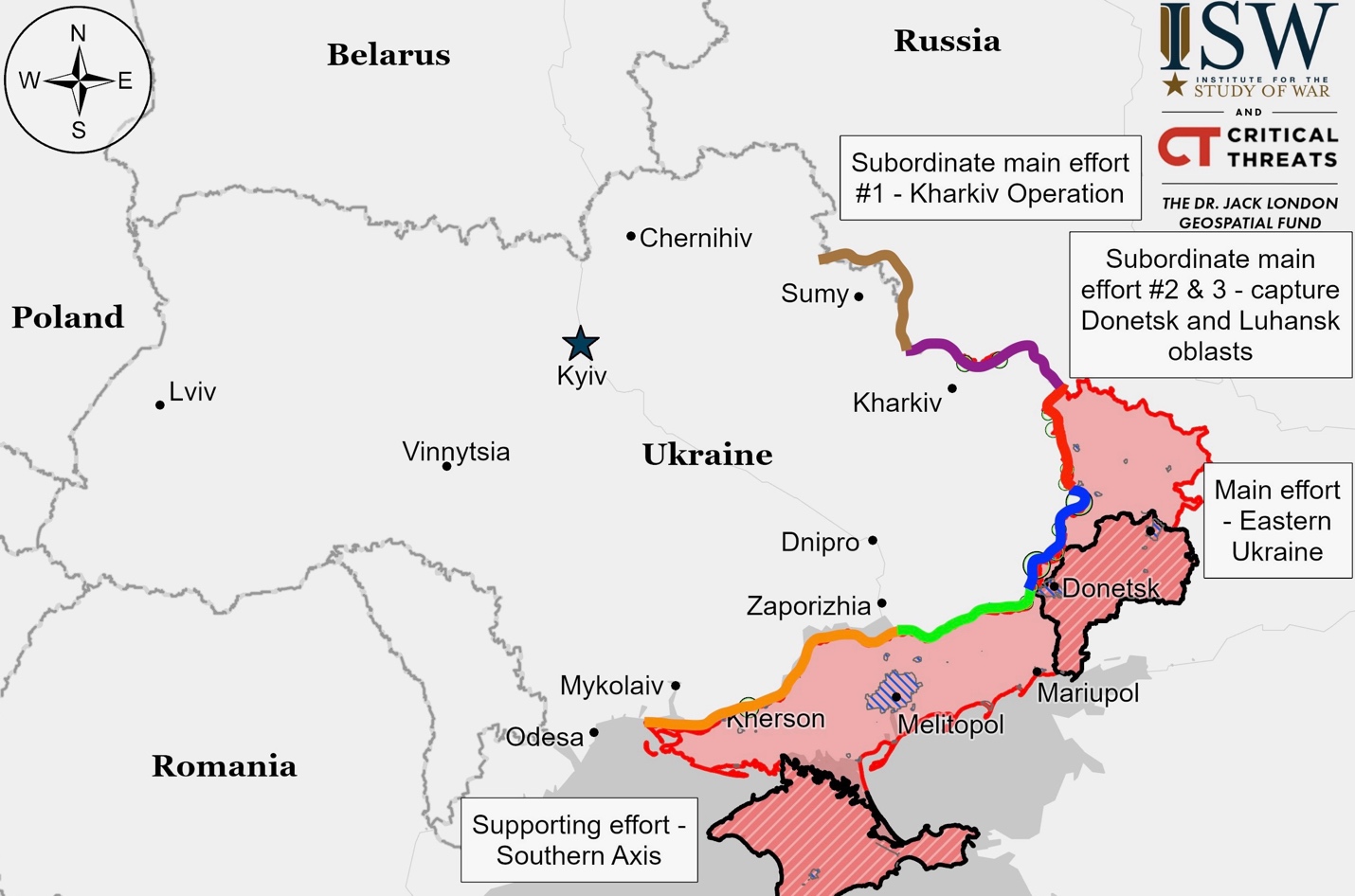
Ukrainian Operations in the Russian Federation – Initiative None
The conflict between Ukraine and Russia continues to intensify, with significant developments occurring along the border regions. Ukrainian forces have launched a series of offensive operations in Russia’s Kursk Oblast, targeting areas near Korenevo, Sudzha, and surrounding territories. These actions have prompted a swift Russian response, including counterattacks and the redeployment of naval infantry, airborne, and artillery units from other fronts to bolster defenses in the region.
The ongoing Ukrainian operation in Kursk Oblast has yielded a strategic advantage for Ukraine’s border security efforts. Ukrainian forces are now able to construct fortifications directly on the Ukrainian-Russian border in neighboring Sumy Oblast, a significant improvement over their usual defensive positions further back from the border due to Russian shelling.
In their efforts to disrupt Russian logistics, Ukrainian forces have targeted key infrastructure. Footage has emerged showing the destruction of a bridge over the Seim River north of Karyzh in Glushkovsky Raion, aimed at hindering Russian ground transportation in the area.
The conflict has also spilled over into Russia’s Belgorod Oblast, with reports of Ukrainian drone attacks causing fires at a plant in Nikolskoye and a fuel storage site in Volokonovsky. Russian authorities claim to have intercepted several drones, while local sources have shared images of the alleged fuel storage fire online.
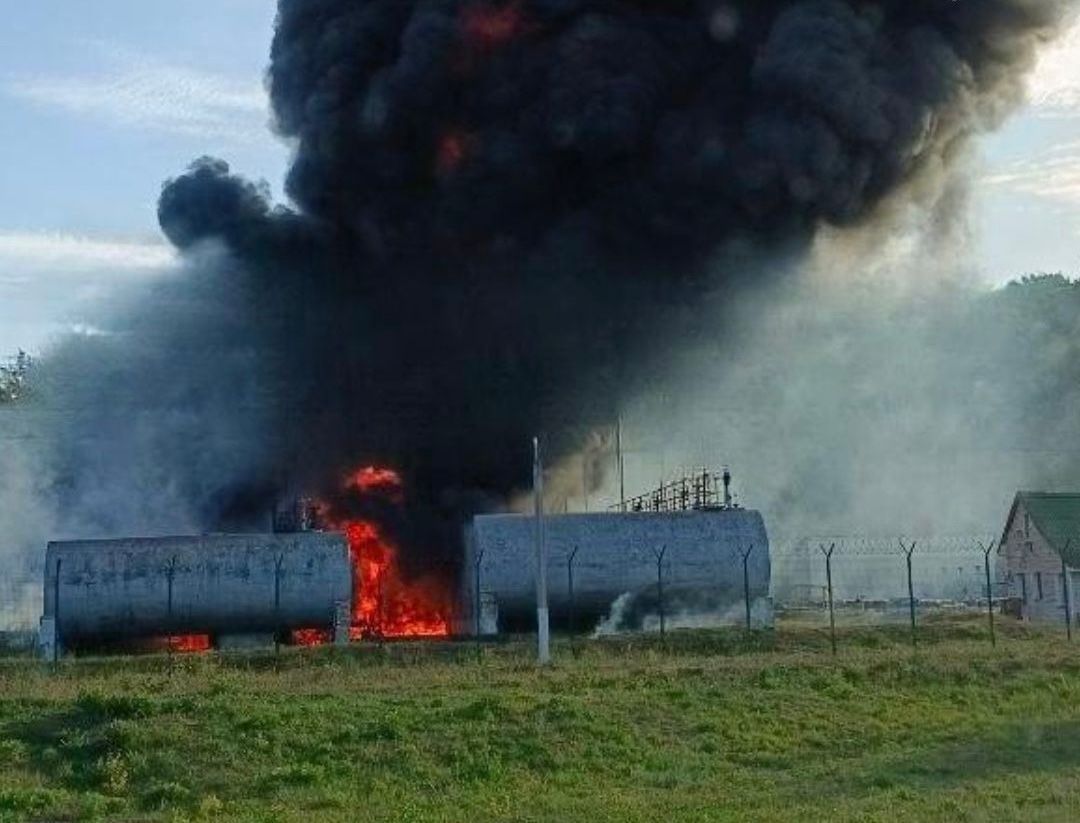 Russia claims Ukrainian drone hit fuel storage in Belgorod Oblast on Sept. 8. (Courtesy)
Russia claims Ukrainian drone hit fuel storage in Belgorod Oblast on Sept. 8. (Courtesy)
Kharkiv Front – Initiative Russia
As tensions continued to simmer, the region near Kharkiv City remained a hotbed of conflict. Russian forces launched attacks on Vovchansk and Hlyboke, maintaining pressure on Ukrainian positions. In a bold move, Ukrainian forces reportedly attempted an armored assault near Lyptsi, though a Russian source claimed this effort was ultimately unsuccessful.
The situation in Vovchansk took a concerning turn when Ukrainian officials reported the use of thermobaric artillery by Russian forces. The target was a plant in the central part of the city, raising fears about the potential for increased civilian casualties and infrastructure damage.
Despite the day’s intense exchanges, the frontline held steady, with no confirmed changes to territorial control reported by either side. The persistence of fighting in this area underscores its strategic importance to both Russian and Ukrainian forces as they continue to vie for advantage in the ongoing conflict.
Luhansk Front – Initiative Russia
The Kupyansk-Svatove-Kreminna line remained a focal point of intense military activity. Russian forces launched a series of attacks across a wide swath of territory, targeting numerous settlements in their push to gain ground. The offensive spanned several key locations, including Synkivka, Petropavlivka, Stepova Novoselivka, and Kyslivka, among others.
Further north, the assault continued through Kotlyarivka, Tabaivka, and Stelmakhivka, while simultaneously pressing southward to Hlushkivka, Andriivka, and Cherneshchyna. The extent of the Russian offensive was evident as it reached Novosadove, Nevske, Makiivka, Torske, and Dibrova, demonstrating a concerted effort to apply pressure along the entire line.
Despite the breadth and intensity of these attacks, no confirmed Russian advances were reported, suggesting strong Ukrainian resistance or effective defensive strategies. Adding another layer to the conflict, a Russian source claimed ongoing attacks on Ukrainian pontoon crossings over the Oskil River, potentially aiming to disrupt supply lines and troop movements.
This widespread offensive action underscores the strategic importance of the Kupyansk-Svatove-Kreminna line, as both sides continue to vie for control in this crucial sector of the conflict zone.
Donetsk Front – Initiative Russia
Siversk
Russian forces intensified their military operations around Siversk, launching a series of coordinated attacks across multiple fronts. The offensive began with strikes northeast of the city, targeting the settlement of Hryhorivka. As the assault unfolded, Russian troops expanded their efforts, pushing eastward towards Verkhnokamyanske. The onslaught continued to spread, with forces advancing to the southeast and engaging in combat near Spirne and Vyimka. This multi-pronged approach suggests a determined Russian effort to exert pressure on Ukrainian defenses and potentially gain strategic footholds in the vicinity of Siversk.
Chasiv Yar
In a concerted push to expand their territorial control, Russian forces made notable progress north of Chasiv Yar, successfully advancing their positions near Kalynivka. This initial gain set the stage for a broader offensive in the surrounding area. The Russian military then launched a series of coordinated attacks, targeting Chasiv Yar directly while simultaneously striking Mayske to the north. The assault didn’t stop there; Russian troops also directed their efforts southeast, engaging Ukrainian forces in Andriivka and Klishchiivka. This multi-directional offensive underscores Russia’s determined strategy to strengthen its foothold and potentially encircle key positions in the region, putting increasing pressure on Ukrainian defenses.
Toretsk
In a significant push, Russian forces made headway in eastern Toretsk, securing new positions and intensifying their offensive in the surrounding area. Their attacks focused on key points near Nelipivka and Sukha Balka, demonstrating a concerted effort to consolidate their gains.
Responding to this pressure, Ukrainian forces launched a bold counteroffensive in Niu York, a strategic town south of Toretsk. Initial reports suggested that Ukrainian troops had managed to advance as far as the town center, potentially shifting the balance of power in the region.
However, the situation remains fluid and complex. While there’s confirmed evidence of a Ukrainian presence in the northwestern part of Niu York, claims of further territorial gains within the town await visual verification.
This dynamic interplay of advances and counterattacks underscores the volatile nature of the conflict in this area, with both sides vying for control of critical locations and seeking to gain the upper hand in an increasingly contested battlespace.
Pokrovsk
The battlefield in eastern Ukraine saw intense activity as Russian forces pushed forward near Pokrovsk. Reports indicated they were making progress towards Hirnyk, with unconfirmed claims of capturing Novohrodivka. The Russian offensive didn’t stop there, as they launched attacks on multiple fronts including Zelene Pole, Vozdvyzhenka, and Hrodivka.
In a potentially significant development, Russian sources suggested an attempt to encircle Ukrainian forces in Selydove. However, this claim remains unverified and should be treated with caution. The Ukrainian military, not content to remain on the defensive, reportedly launched counterattacks in the vicinity of Selydove, demonstrating their resolve to hold their ground.
As the situation continues to evolve, the true extent of Russian advances and the effectiveness of Ukrainian counteroffensives remain to be seen. The ongoing clashes underscore the fluid and contested nature of the frontlines in this region of eastern Ukraine.
West of Donetsk City
The battle for control around Donetsk City intensified as Russian forces launched a series of attacks, concentrating their efforts on the strategic locations of Krasnohorivka and Heorhiivka. A Russian source boldly claimed advances in the northwestern part of Krasnohorivka, though this assertion remains unverified without visual evidence.
Adding to the complexity of the situation, reports surfaced of a tank battalion operating in the vicinity of Krasnohorivka, potentially bolstering the Russian offensive capabilities in the area. However, despite the apparent increase in military activity, no confirmed territorial gains by Russian forces were reported in this hotly contested region.
The lack of verified progress suggests either strong Ukrainian resistance or possible exaggeration of Russian claims. As the conflict continues to unfold, the true extent of any shifts in control remains unclear, highlighting the fog of war that often shrouds such intense military engagements.
Southwest of Donetsk City
The conflict in eastern Ukraine saw renewed Russian offensives southwest of Donetsk City, with forces launching attacks on multiple fronts. The strategic locations of Kostyantynivka, Vodyane, and Vuhledar became the focus of these military operations as Russian forces sought to gain ground in the region.
Despite the intensity of these assaults, the Russian military failed to make any confirmed advances in these areas. The lack of verified progress suggests either robust Ukrainian defenses or possibly limited resources committed to these offensives by the Russian side.
This series of attacks, while unsuccessful in terms of territorial gains, underscores the ongoing volatility in the region and the persistent efforts of Russian forces to probe Ukrainian defenses. The situation remains fluid, with both sides likely reassessing their strategies considering these recent engagements.
Zaporizhia Front – Initiative None
Zaporizhia-Donetsk Border Area
Russian and Ukrainian forces have experienced a temporary lull in fighting across this region.
Zaporizhia Line
Fighting persisted in western Zaporizhia Oblast, with the areas around Robotyne and Mala Tokmachka seeing the most intense action. Russian sources asserted they had made advances in Robotyne and to the west of Novopokrovka. However, these claims remain unverified, as no visual evidence has emerged to support them. Despite the ongoing clashes and reported movements, the actual frontline in this sector held steady, with neither side able to secure significant territorial gains.
Kherson (Dnipro River) Front – Initiative None
Fighting continued on the east bank of the Dnipro River in Kherson Oblast, with no confirmed changes to the frontline. Russian sources claimed their forces were active on islands in the Dnipro River Delta. Tank units were reportedly operating in the area along the river. Despite these ongoing engagements and reported movements, the overall situation remained fluid, with no significant shifts in territorial control verified.
Ukraine News
Russian forces launched a significant aerial assault against Ukraine, firing 4 Kh-59 cruise missiles from Belgorod Oblast and 23 Shahed drones from Kursk Oblast and occupied Crimea. Ukrainian air defenses intercepted 1 missile and 15 drones over Odesa, Kharkiv, and Dnipropetrovsk oblasts. The attack sparked international concern when some Russian drones reportedly entered Romanian airspace, with one likely crashing in an uninhabited area.
President Volodymyr Zelensky revealed the scale of recent Russian attacks, stating that over the past week, Ukraine had been targeted by more than 800 glide bombs, nearly 300 Shahed drones, and over 60 missiles of various types.
In a significant governmental reshuffle, Zelensky made several high-level appointments. Iryna Vereshchuk and Viktor Mykyta were named Deputy Heads of the Presidential Office, while Oleksandr Kamyshin and Dmytro Lytvyn became presidential advisors. These changes involved some restructuring, with Vereshchuk leaving her position as Minister for Reintegration of Temporarily Occupied Territories and Mykyta departing as Head of Zakarpattia Oblast Military Administration. The government is also considering reforms to the Reintegration Ministry, potentially including a name change.
Innocent Victims Of War
The casualty count of civilians in the past 24 hours: (Russian War Crimes)
DEATHS: 6 INJURIES: 17+
Russian forces launched a series of devastating attacks across Ukraine, resulting in significant civilian casualties and infrastructure damage. In Sumy, an early morning airstrike using prohibited weapons struck a residential area, killing two people and injuring four, including two children. The attack destroyed one house and damaged at least 20 homes and four vehicles.
The town of Derhachi in Kharkiv Oblast was hit by multiple-launch rocket systems, claiming the life of a 76-year-old woman and injuring at least 13 others. Eight residential houses were damaged in this attack. Earlier, two women were killed in Russian attacks in the Kupiansk district.
The most severe incident occurred in Poltava, where a Russian missile strike on a military education institute on September 3 has now claimed 58 lives, with the death toll rising as three more victims succumbed to their injuries in hospital. This attack, one of the deadliest in recent months, left 220 people hospitalized, some in critical condition. The strike also damaged a nearby medical facility and partially destroyed the institute’s building.
President Volodymyr Zelensky highlighted the urgency of the situation, noting that the missiles gave people only three minutes to seek shelter. These attacks have sparked international condemnation and renewed calls for increased Western support in air defense systems, underscoring the ongoing severity of the conflict and the pressing need for enhanced protective measures in Ukrainian cities.
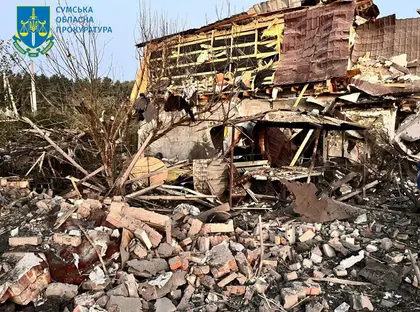 Aftermath of Russian attack on Sumy (Prosecutor’s Office)
Aftermath of Russian attack on Sumy (Prosecutor’s Office)
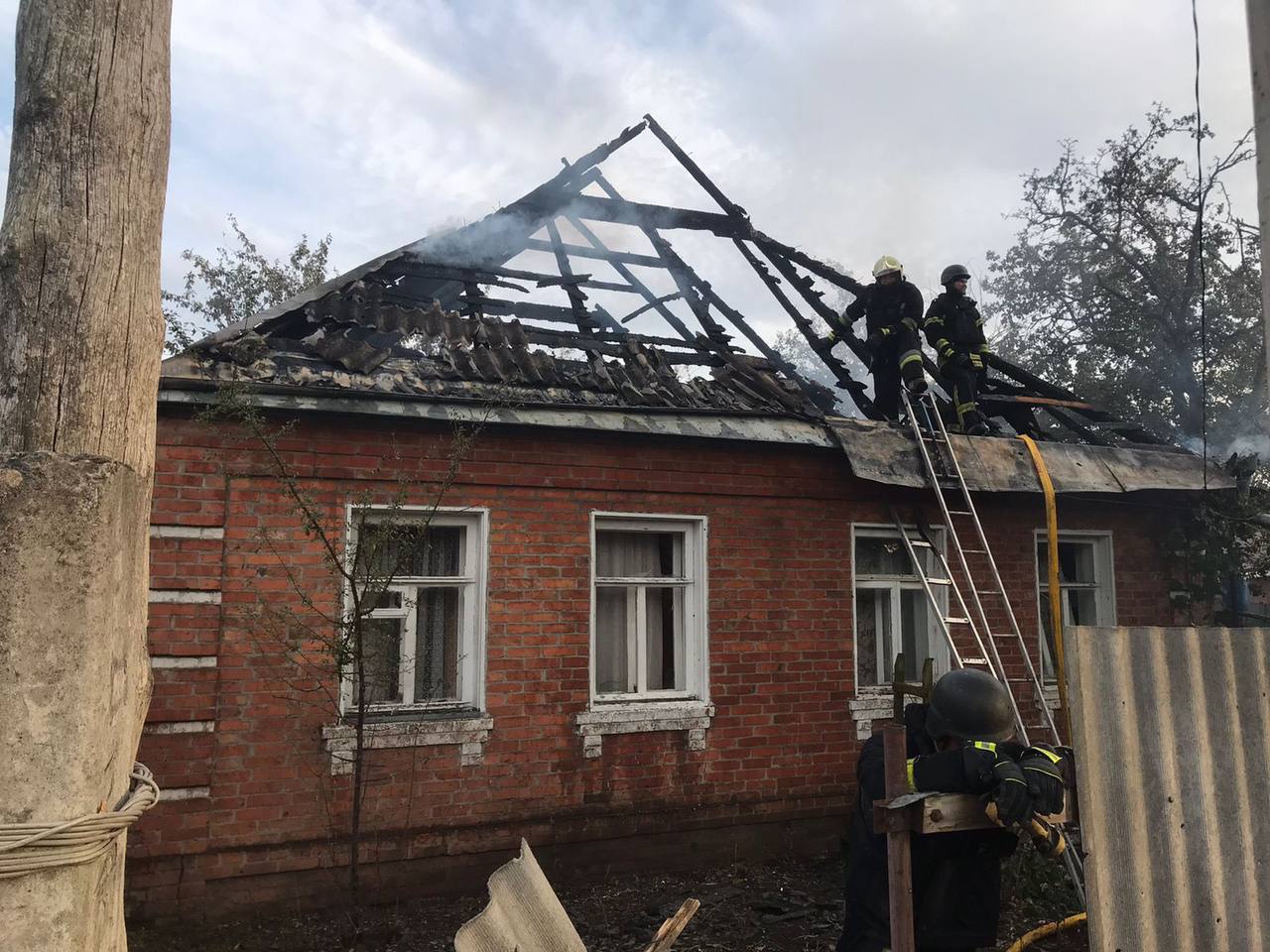 Тhe aftermath of the Russian attack on Kharkiv Oblast on Sept. 8. (Oleh Syniehubov/Telegram)
Тhe aftermath of the Russian attack on Kharkiv Oblast on Sept. 8. (Oleh Syniehubov/Telegram)
Ukrainian Mobilization and Industrial Defense Base
President Zelensky revealed Ukraine’s strategic initiative to construct underground weapons facilities, aiming to secure military supplies in case of delayed foreign aid. This move highlights Ukraine’s efforts to bolster self-reliance in its defense capabilities. Zelensky also mentioned the development of new drones and missiles intended for use against Russian territory, signaling an expansion of Ukraine’s offensive capabilities.
Meanwhile, in Kharkiv, a grassroots organization named Turbota is making significant contributions to Ukraine’s war effort. Founded by Juliia in August 2022, this volunteer group, primarily composed of women, operates from a basement in Kharkiv city and a village in Kharkiv Oblast. Their main focus is creating camouflage suits and nets for soldiers, crucial for both protection and morale.
Volunteers like Anya and Nataliia not only craft these essential items but also engage in public demonstrations to raise awareness and funds. Turbota relies on a diverse range of donations, including support from IT professionals and international backers. The organization’s work goes beyond material production, serving as a form of therapy for volunteers and embodying the community’s resilience and determination.
This grassroots effort in Kharkiv exemplifies how Ukrainian citizens are uniting in creative ways to support their military, demonstrating unwavering spirit and solidarity in the face of ongoing Russian aggression.
 Testing out their own hand-made camouflage suits amidst bushes by the main Kharkiv flagpole.
Testing out their own hand-made camouflage suits amidst bushes by the main Kharkiv flagpole.
Ukraine’s Allies
German Chancellor Olaf Scholz has issued a call to action, urging for “several hundred thousand” more Ukrainian refugees in Germany to enter the workforce. While the Jobturbo program has already facilitated employment for over 200,000 refugees, Scholz is pushing for accelerated progress in this area.
Since February 2022, Germany has welcomed more than 1 million Ukrainian refugees, investing over 20 billion euros in their accommodation and integration. However, the path to employment hasn’t been smooth for all, with bureaucratic hurdles particularly affecting medical professionals seeking to practice in Germany.
In response to the financial strain of supporting such a large refugee population, Germany has joined Poland and the Czech Republic in requesting EU financial assistance to offset these costs. This move underscores the broader European challenge of managing the influx of refugees from Ukraine.
Scholz’s push for increased refugee employment comes at a politically sensitive time. His Social Democratic Party has seen a decline in popularity, partly attributed to its steadfast support for Ukraine. The Chancellor’s recent comments reflect an attempt to balance humanitarian commitments with domestic economic concerns, highlighting the complex interplay between international solidarity and national interests in the ongoing refugee situation.
Russia News
In a small town in southern Russia, tensions boiled over as a “mass brawl” erupted between Russian ultranationalists and Central Asian residents. The incident, which took place in Afipsky, Krasnodar Krai, led to the detention of 43 people and prompted an investigation by the Russian Investigative Committee. This clash between local residents and “people of non-Slavic appearance” underscores the growing xenophobia in Russia, fueled by ultranationalist groups like “Russian Sword” and “Russian Community” that promote anti-migrant sentiment.
As this event unfolded, highlighting the increasing tensions between Russian nationalists and ethnic minorities or migrants, another controversy was brewing in the world of documentary filmmaking. Russian-Canadian filmmaker Anastasia Trofimova’s “Russians at War” is set to premiere at the Toronto International Film Festival, sparking heated debate over its content and funding sources.
Trofimova’s admission to entering Russian-occupied Ukrainian territories without permits while filming has drawn criticism, particularly from Ukrainian officials. The documentary, which focuses on Russian soldiers, received substantial funding from the Canadian Media Fund, further intensifying the controversy. While Trofimova defends her work as an anti-war film, citing her Russian background as a barrier to accessing the Ukrainian perspective, critics argue that the documentary echoes Russian propaganda narratives about the war in Ukraine.
These two events, though seemingly unrelated, both reflect the complex and often tense relationships between different ethnic groups and nationalities in the context of ongoing conflicts and societal divisions.
Russian Mobilization and Defense Industrial Base
In the realm of military technology and training, Russia’s drone warfare capabilities have come under scrutiny. A former instructor from the “Storm-Z” unit voiced sharp criticism of the training provided to Russian drone unit commanders. He pointed out that their lack of technical expertise is resulting in unnecessary losses of both personnel and equipment. The instructor highlighted several critical issues, including a poor understanding of electronic warfare impacts, the use of subpar drones, and a failure to effectively integrate drone operations into combat scenarios.
These concerns were brought to light just as the Russian design bureau MiS unveiled an upgraded version of their hexacopter at the “Dronnitsa-2024” gathering of combat drone operators. The new MiS-35M model boasts improvements in both offensive and defensive capabilities. With an increased payload capacity of up to 4.2 kilograms and enhanced resistance to electronic warfare, this modernized strike and reconnaissance drone represents Russia’s efforts to advance its unmanned aerial technology.
The juxtaposition of these events paints a complex picture of Russia’s drone warfare program. While there are evident strides in hardware development, as demonstrated by the MiS-35M, the criticism from the former instructor suggests that there may be significant gaps in the human element of drone operations. This disconnect between technological advancement and operational readiness could have far-reaching implications for Russia’s military effectiveness in modern conflict scenarios.
Russia’s Allies
North Korea marked a milestone as it celebrated its 75th founding anniversary with a grand paramilitary parade in Pyongyang. The event, featuring an impressive display of rocket launchers, served as a platform for leader Kim Jong Un to showcase the nation’s growing ties with China and Russia. These strengthening alliances were evident in the presence of a Chinese delegation and the participation of a Russian military ensemble in the festivities.
As the world watched the spectacle unfold, attention shifted to the diplomatic undercurrents running beneath the surface. Speculation is mounting about an imminent meeting between Kim Jong Un and Russian President Vladimir Putin. The potential summit, possibly set to take place in Vladivostok, is rumored to focus on North Korean arms sales to support Russia’s ongoing war efforts in Ukraine. Reports suggest that North Korea has already sent millions of artillery shells to Russia, underlining the deepening military cooperation between the two nations.
Adding intrigue to the situation, the absence of Russian officials at the anniversary celebrations has only fueled further speculation about the Kim-Putin meeting. South Korea’s intelligence agency has hinted at the possibility of a clandestine travel plan for Kim’s visit, designed to avoid media scrutiny.
This unfolding narrative weaves together elements of national celebration, international alliances, and covert diplomacy, painting a complex picture of North Korea’s evolving role on the global stage and its potential impact on regional dynamics.
Controlling the Narrative and Russian Propaganda
In the complex world of Russian information control, a new chapter is unfolding. The Kremlin’s strategy for managing military-related information is evolving, particularly in its approach to influential military bloggers, or “milbloggers.”
Alexander Sladkov, a prominent milblogger, recently shed light on internal power dynamics, revealing that former Defense Minister Sergei Shoigu’s team had attempted to punish critical voices among their ranks. However, the Presidential Administration stepped in, suggesting a preference for co-opting these influential figures rather than silencing them outright.
This shift in tactics is further evidenced by the state’s use of awards to garner loyalty. Milblogger Yevgeny Poddubny’s receipt of the Solidarity Prize exemplifies this approach, as the Kremlin seeks to align these influential voices with its narrative.
Despite these efforts, not all voices have been muted. One outspoken blogger recently posted videos criticizing the government, alleging the presence of “traitors in the Kremlin” and decrying the imprisonment of “inconvenient people” like nationalist Igor Girkin. The subsequent attempt by channel administrators to downplay these comments hints at a growing climate of self-censorship, likely motivated by fear of potential charges of discrediting the Russian military.
This delicate balance between allowing some critical content and encouraging self-censorship appears to be the Kremlin’s preferred method of information control. By intervening in cases against certain bloggers, the Presidential Administration, seemingly with President Putin’s blessing, aims to maintain an appearance of free speech while effectively managing the narrative.
This nuanced approach reflects the Kremlin’s understanding of the power of social media and the potential for censored material to go viral. By co-opting influential voices and fostering an environment of self-regulation, Russian authorities are attempting to control the flow of information without resorting to overt censorship that could backfire.
Source Material
Institute for the Study of War – understandingwar.org
The Kyiv Independent – kyivindependent.com
Kyiv Post – kyivpost.com
